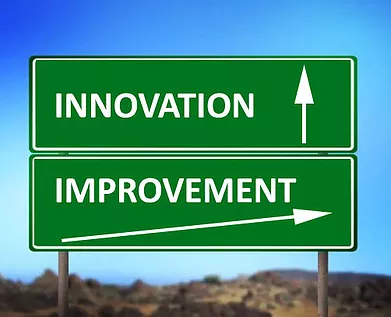Our customers are hungry to learn. They (and we) benchmark themselves against their competition and others. They compare what they do with what others do, finding opportunities to change and improve.
I’m fond of saying, “we are prisoners of our own experience….” We tend to act based on what we’ve done in the past, often blind to the fact that things have changed, or there may be better/different approaches that may be more effective.
One of the greatest things sellers can do is help customers learn what other are doing. We’ve learned the power of “In working with other customers like you….” It can help our customers think differently, it helps incite them to change, to improve.
It’s such a powerful way to engage customers, helping them learn and think differently. It creates conversations, “What if we tried it?”
As sellers, we have great visibility what others are doing, the challenges they’ve faced, the results they’ve produced. We can bridge those experiences in our own conversations, helping our customers learn and change.
I don’t want to minimize the importance and power of these conversations, but I think there is a different, more powerful conversation.
What if we started a conversation, “In working with customers not like you….”
The difference between these conversations is the difference between improvement and innovation.
Learning from customers “like you,” enables us to copy, it enables them to see things others are doing, and gain from doing those things. But it is limiting in that it doesn’t enable them to do better than they are, it just enables improvement.
Sometimes, we might create greater value by helping our customers discover answer in different, non traditional places.
What if we could help our customer innovate in their own markets and industries? What if we went beyond helping them understand what others like them are doing? What if we helped them learn what others not like them are doing–then helped them figure out how they might adapt those things to their businesses?
This would enable our customers to think differently from those like them, to take an idea from a very different space, adapting it to what they do-driving improvements customers like them aren’t thinking about.
Some years ago, we created an experiment with two very different customers. One was a leader and high performer in the electronics components space. Typically, others looked to what they were doing, copying them to improve. But this customer was trying to innovate, doing things differently. The other was a fashion manufacturer in the extreme sport space. Likewise, they were a leader in their category, and were trying to extend that lead.
Both were committed to continued improvement, sharpening the execution of what they did. But they also wanted to take giant steps forward and copying their competitors wouldn’t do this.
It was strange to see these two groups in the same meeting room. On one side of the table was a line of people in powder blue shirts and khaki’s. On the other side was a group of people in leathers, full sleeves of fascinating tattoos, and the visible piercings were in interesting places.
They looked at each other, then looked at me, mouthing “WTF????”
We had agreed to focus on a couple of problem opportunity areas they had in common. One group started discussing how they experienced it, what they and others in the industry did to address it, challenges they faced, things they had tried that worked and didn’t work. The other group did the same thing.
What we discovered is that while they were similar challenges, the differences in their businesses and markets caused them to address these issues in very different ways. But here’s where the magic came in.
As they reflected on each other’s experiences and approaches to similar issues, they realized they could take some of each other’s approaches, but adapt them to the differences in their businesses and markets. Nothing could be copied–nor did they want to copy, but the ideas caused them to think about their own challenges differently, with different perspectives, enabling them to try new approaches within their organizations, industries, and markets.
I labelled this, “Artful Plagiarism.” It turns out we can learn huge amounts from people not like us. We can look at the things that may be common for them, but adapting, tweaking, adjusting them may be new and novel.
The research supports this. We know that more diverse groups make higher quality decisions, and the time to decision is much faster than groups of similar people/thinking.
As sales people, we see what all our customers are doing. How they are leveraging our solutions in very different circumstances and creating great value. We can help our customers think differently, to innovate, by sharing, “In working with customers not like you, we’ve seen this….. What if we started tweaking this approach for you, what might it mean for what you are trying to achieve….?”
We need to be able to have both conversations with our customers. The work my friend, Hank Barnes, does in his updated “Crossing the Chasm” helps us understand which conversation will resonate with which customers.
Customer who are late adopters or laggards will want the “In working with other customers like you…” conversation.
Customers who are innovators and early adopters will be more interested in the “In working with customers not like you…” conversation.
In both we need to be able to help the customer understand how they can adapt these thing to their own organization.

Leave a Reply